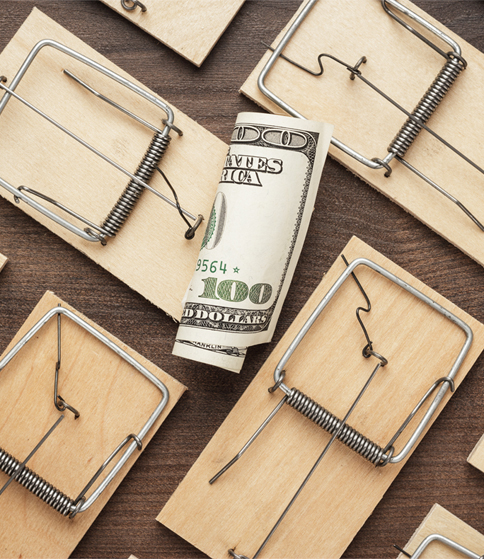
What’s a Good Profit Margin for Retailers?
Why did you start your own business? Answers will vary from fulfilling a passion, the desire to be one’s own boss, the ability to set one’s schedule, etc. Whatever the reason, surely every entrepreneur also wants to make a profit. According to a 2016 study by Deloitte, most retail businesses’ net profit averages around 3.2%, but does that number apply to you? What kind of profit margin can a small- to medium-sized retail business owner reasonably expect?
What is a Profit Margin?
Before digging too deep into determining a good profit margin for retailers, let’s define some terms. There are two types of profit margins: gross profit margin and net profit margin. Bizfluent, which mentors entrepreneurs, spells it out: Sales minus cost of goods sold equals gross profit.
Consider this example from Bizfluent. Annual sales for X retailer are $985,000 while the cost of goods sold is $591,000, so the gross profit is $394,000. “As a percentage, gross profit margin or the gross margin ratio = gross profit divided by sales.” In this case, $394,000 divided by $985,000 or 40 percent is the gross profit margin.
And net profit margin? Grow, which helps to grow companies, defines it as, “a percentage derived from an equation that shows what cash remains from your gross profit (revenue minus cost of goods) after your operating expenses and all other expenses, such as taxes and interest paid on debt have been deducted.”
Therefore, net profit is less than gross profit and a truer indicator of what retail business owners actually take home. However, Grow recommends retailers know their gross profit margin since it helps business owners “measure and understand how efficiently your company uses its raw materials and labor to produce the goods/services it offers and also track profitability trends.”
Learn the Average Profit Rates for Retailers
The retail industry includes many different types of businesses, so the average profit margin for retail can be misleading. However, knowing how others are doing can be helpful. Vend, makers of Point of Sale (POS) systems, conducted a study through March of 2019 which included more than 13,000 retail stores spanning multiple industries and areas.
Vend found that the average gross profit margin for retailers is 53.33%. Those with higher margins included beverage manufacturers, jewelry stores, and cosmetics (as high as 65 plus percent) while alcoholic beverages, sporting goods stores, and electronics were lower (just over 35 percent).
And what about net margin? Not so high. According to an article on Investopedia’s website, the average profit margin for retail is typically from 0.5 to 3.5%. The 2016 Deloitte study mentioned earlier, which found the average for the entire industry to be 3.2%, noted the net profit margin for the ten largest retailers:
- Wal-Mart: 2.9%
- Costco: 2.0%
- Kroger: 1.7% (Grocery Stores as an industry: 2.3%)
- Schwarz Group (German): N/A
- Walgreens: 3.6%
- Amazon: 1.7%
- Home Depot: 8.4%
- Aldi (German): N/A
- Carrefour (French): 1.1%
- CVS: 3.0%
Many industries see higher profit margins. Consider the following:
- Retail or commercial banks: 24%
- Restaurants: 3–5% (typically – could vary based on restaurant type)
- Electronics sector: 6.7% (includes semiconductors, technical instruments, circuit boards, photographic equipment, communication devices, and other electronics and computer equipment)
- Electrical equipment manufacturer: 7%
Returning to retail, some sub-sectors tend to be more profitable based on net margin. Those subsectors, notes Investopedia, “are usually the building supply and distribution retailers. Companies in these sectors often achieve average net margins around 5%.”
Watch Out For Challenges to Profits
Besides the challenge of low margins, many retailers face uncertainty. Investopedia says, “certain markets, such as retail electronics and retail clothing, have to adapt to constant changes in consumer tastes.”
Because profit margins are low for many retailers, they rely on volume. Investopedia points to a few reasons why retail margins tend to be low. These reasons include the internet, which makes price comparison so simple and allows people to easily purchase material from anywhere (which means more competition).
In addition, most retail spending is discretionary which leads to customers who are picky and unreliable. There’s also, per Investopedia, “a relatively high price elasticity of demand for retail goods, which makes it difficult to raise prices.”
To increase net profit margin and bring it closer to gross profit margin, a Vend article suggests streamlining operations and reducing operating expenses. Also, employee overtime can be reduced. A global suggestion is to “go through all the tasks that you and your employees complete day-to-day, and see if you can automate any of them.” While this may lead to an initial increase in costs, automation saves money in the long run and may lead to a good profit margin for retail.
While the net profit margins for retailers are small, entrepreneurs who dream of opening a business will not be denied. And they shouldn’t be. Retail outlets open every day, and many turn a profit which can enable the owner to live a good life. However, that life will be one where margins need to be considered and carefully calculated. Owners of small retail businesses can have the business they strive for and earn a reasonable profit.
